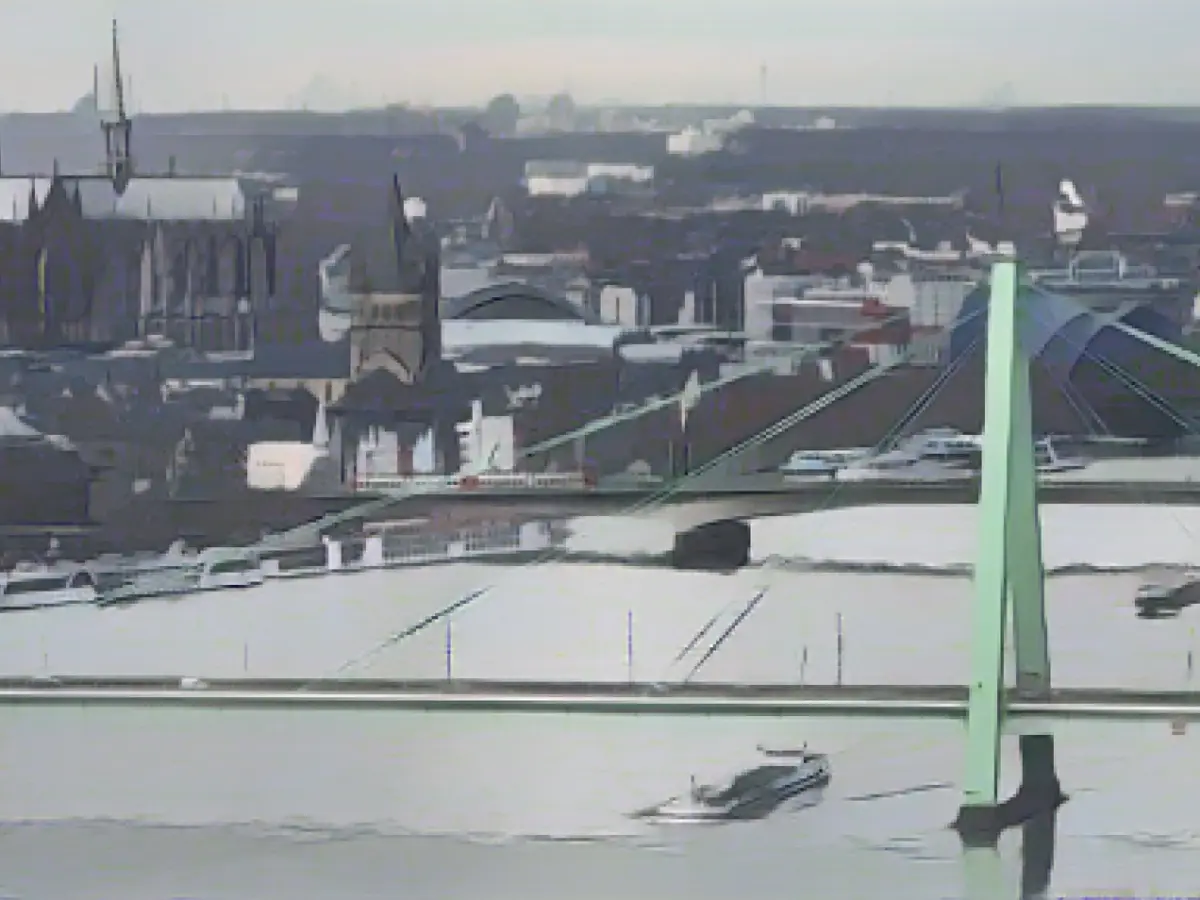Rhine Flooding Causes Transport Disruptions
The Rhine River's water levels are on the rise due to rain and melting snow, reaching alarming levels. At the Maxau gauge near Karlsruhe, the navigation high water mark II has been surpassed, resulting in a halt to shipping traffic as reported by the Rhineland-Palatinate State Office for the Environment. Further rises in water levels are predicted, and flooded riverbanks are expected in certain areas.
As of Tuesday, the water level in Karlsruhe touched approximately 7.5 meters. Over the following days, the maximum level could hit between 8.29 and 8.57 meters, akin to a flood that occurs every 5-10 years. In Mainz, the water level is forecasted to reach 5.50 meters on Thursday night, while in Koblenz, the 5-meter mark is projected to be surpassed on Tuesday evening.
Ships in Mainz, Bingen, and Koblenz are now permitted to navigate at a reduced speed and stay in the center of the Rhine. In Speyer, the Rhine is expected to surpass the level II mark soon, which will necessitate a pause in shipping traffic. According to a spokesperson, these restrictions could last until the end of the week.
The city of Ludwigshafen has shut down the city park and Rhine promenade as a precaution. In addition, dam beams have been installed in flood protection walls, as reported by the city. The city of Koblenz has raised flood protection walls, closed flood gates, and prohibited parking near the river.
Daily life in these regions is being affected, with restrictions on activities along the Rhine. From moderate speed limits on shipping and travel route alterations to park and promenade closures, Rhine floods are broadly impacting the region.
The German Weather Service (DWD) predicts rain in Rhineland-Palatinate on Wednesday, with showers anticipated in some areas.
(Incorporated knowledge from enrichment data) - Historically, the Rhine and Danube rivers have been stable, with only occasional concerns at bottlenecks like Kaub and Pfelling. Climate change, however, may present future water level challenges. - Climate change impacts, such as increased extreme precipitation events, present risks for flash flooding in heavily urbanized areas. - Local authorities have comprehensive flood management plans, which include emergency protocols, flood risk management, and adaptation strategies. These initiatives are part of a national Flood Management Programme (FRMP). - Germany is actively addressing climate change through policies like the Energiewende (energy transition), which focuses on reducing greenhouse gas emissions and improving energy efficiency. - The region's infrastructure, such as the rail network managed by Deutsche Bahn (DB) Netz AG, needs to adapt to climate change to become more resilient against heavy rainfall events.








